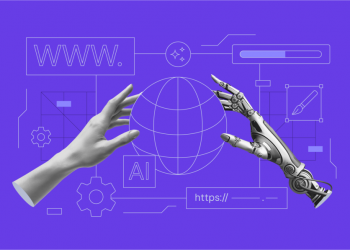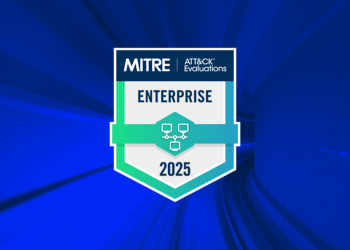As artificial intelligence (AI) continues to play an increasingly crucial role in critical infrastructure and essential services, the significance of prioritizing the security of AI models becomes more apparent.
It is imperative to place a high emphasis on securing AI models to prevent potential attacks and ensure the uninterrupted operation of essential services.
Safeguarding AI systems against a wide array of threats and vulnerabilities is crucial to maintaining the integrity and reliability of the operations they support.
Consequently, implementing robust and comprehensive security measures is essential to strengthen the future of AI and uphold resilience in the face of potential risks, thereby ensuring the continued reliability and security of critical infrastructure and essential services that rely on AI technology.
Undoubtedly, it is vital to prioritize the security of AI models to prevent them from being attacked. Here are some strategies for securing your AI models:
1. Use encryption:
Implement encryption methods to protect data while it is being processed by the AI model.
This helps to prevent unauthorized access to sensitive information.
2. Implement access control:
Limit access to the AI model and its underlying data to only authorized individuals or systems. Use role-based access controls to ensure that only those with the appropriate permissions can interact with the model.
3. Conduct regular security audits:
Regularly assess the security of your AI models through audits and penetration testing. Identify and address any vulnerabilities to prevent potential attacks.
4. Monitor for anomalies:
Implement monitoring tools to detect any unusual behaviour or anomalies in the AI model’s performance. This can help identify potential attacks or breaches in real time.
5. Update and patch regularly:
Keep the AI model and its underlying systems up to date with the latest security patches and updates. This helps to protect against known vulnerabilities and exploits.
6. Train employees on cybersecurity best practices:
Educate employees on cybersecurity best practices, such as phishing awareness and password security, to prevent human error from compromising the security of the AI model.
7. Implement network security measures:
Protect the network infrastructure that the AI model relies on, such as firewalls, intrusion detection systems, and secure VPN connections.
Permit me to accentuate with instances that in recent years, the integration of artificial intelligence (AI) in critical infrastructure and essential services has expanded significantly as a fortifying the future of robust outcomes of such integration.
Examples include the use of AI in autonomous vehicles, healthcare diagnostics, financial systems, and energy grid management. While these advancements offer numerous benefits, they also present a broader attack surface for potential security breaches.
One notable example is the use of AI in autonomous vehicles. These vehicles rely on sophisticated AI algorithms to interpret sensor data, make real-time decisions, and navigate complex environments. The security of these systems is crucial to prevent potential hacking attempts that could compromise passenger safety.
In healthcare, AI is revolutionizing diagnostics and treatment planning. Machine learning algorithms can process vast amounts of medical data to identify patterns and assist in disease diagnosis.
However, if the security of these AI systems is compromised, there is a risk of tampering with patient records, misdiagnoses, or disruptions in critical medical services.
Financial institutions are also leveraging AI for fraud detection, risk assessment, and customer service.
AI-driven algorithms analyze large volumes of financial transactions to identify potential fraudulent activity.
If these AI systems are not adequately secured, they could be vulnerable to exploitation, leading to financial losses and breaches of customer privacy.
Furthermore, smart energy grids utilize AI for efficient energy distribution and demand forecasting. However, if these AI systems are targeted by malicious actors, there is a risk of interfering with the energy supply, causing widespread power outages, and disrupting essential services.
These examples underscore the critical need to fortify the future by implementing robust security measures for AI systems across various domains.
Strategies such as deploying secure communication protocols, implementing rigorous access controls, and integrating anomaly detection mechanisms can mitigate the risks and enhance the resilience of AI technologies.
The integration of AI into critical infrastructure and essential services necessitates a concerted effort to fortify the future by strengthening AI security.
By proactively addressing potential vulnerabilities and implementing robust security measures, we can safeguard the innovative potential of AI while ensuring a secure technological landscape for the future.
Prioritizing the security of AI models and implementing these strategies enables organizations to reduce the risk of attacks and safeguard their critical data and systems.
Organizations need to prioritize the security of AI models and implement the aforementioned strategies with diligence to minimize the risk of potential attacks.
This approach is pivotal for effectively protecting invaluable data and systems from security breaches and unauthorized access.
On the point regarding encryption. Encryption plays a crucial role in securing AI models by encoding the data and information processed by the AI system.
It ensures that any sensitive data is transformed into an unreadable format, which can only be decrypted and accessed by authorized parties with the appropriate keys or credentials.
Several encryption methods can be utilized to secure AI models, such as symmetric-key encryption, asymmetric-key encryption, and homomorphic encryption.
Symmetric-key encryption uses a single key to both encrypt and decrypt the data, while asymmetric-key encryption utilizes a pair of public and private keys.
Homomorphic encryption enables computations to be performed on encrypted data without the need for decryption, which is particularly useful for protecting sensitive information during AI model training and inference.
By implementing encryption, organizations can safeguard sensitive data as it passes through the AI model, preventing unauthorized access and maintaining data confidentiality.
This is especially important in scenarios where AI models handle personal, financial, or proprietary information, as it helps to maintain trust and compliance with privacy regulations.
Additionally, encryption can also be used to protect the model parameters and architecture, preventing them from being reverse-engineered or tampered with by malicious actors.
Overall, encryption is a fundamental security measure for safeguarding AI models and the data they process.
Essentially, organizations need to recognize that AI security is an ongoing process, and proactive measures need to be continuously integrated into the operational framework. As the threat landscape continues to evolve, AI models must adapt to new potential risks and vulnerabilities.
This requires a comprehensive and dynamic approach to security, characterized by continuous monitoring, adaptation, and improvement.
Further, organizations should take steps to foster a culture of cybersecurity awareness and vigilance among their employees.
Training programs and awareness initiatives can empower personnel to recognize and respond to potential security threats, reducing the likelihood of human error compromising AI model security.
Besides, collaboration and information-sharing within the industry can contribute to bolstering AI security.
By participating in sharing threat intelligence, best practices, and emerging trends in AI security, organizations can collectively enhance their defences and fortify their AI systems against a rapidly evolving threat landscape.
In conclusion, the safeguarding of AI models demands a multi-faceted, resilient, and agile security posture, underpinned by comprehensive measures, continuous improvement, and collaboration across the industry.
By embracing these principles and approaches, organizations can instil trust, reliability, and resilience in their AI implementations, ensuring the protection of valuable data and systems against potential attacks.
Through unwavering commitment and proactive measures, the security of AI models can be upheld in the face of emerging cyber threats, enabling organizations to navigate the evolving landscape of AI security with confidence and resilience.
*The writer, Professor Ojo Emmanuel Ademola, is the first Nigerian Professor of Cyber Security and Information Technology Management












